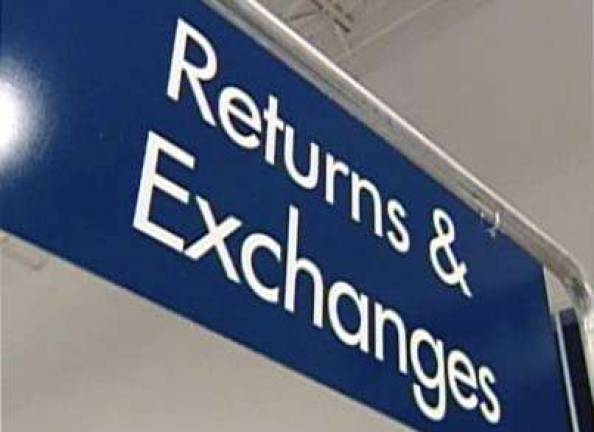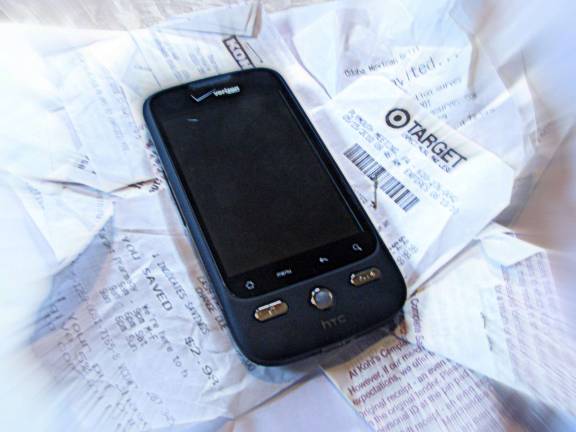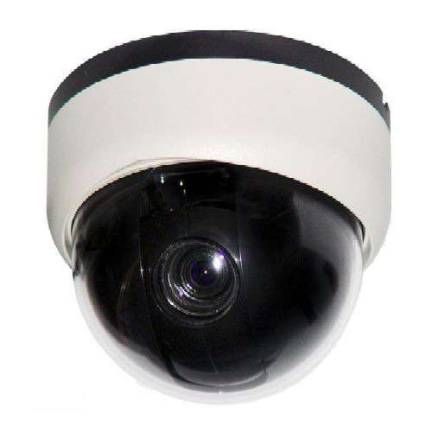Retailers ready for return fraud



CENTRAL VALLEY – Along with discarded ribbons, bows and other remains of the 2012 holiday, there are also sure to be plenty of half-rumpled receipts recording the purchase of gifts in case of a return.
Unlike the colorful shreds of present's wrapping, however, those thin white slips of paper can help fraudsters make illegitimate returns, a problem that retailers say costs them billions of dollars each year.
“People recover receipts from the garbage, maybe from a retail bag, and then steal the thing that is exactly on the receipt,” said Richard Mellor, Vice President of Loss Prevention for the National Retail Federation, an industry trade group.
The federation estimated that, over the course of this year’s holiday season, retailers will lose nearly $3 billion due to fraudulent returns, according to a survey of businesses.
Mellor said that the holidays are the prime time for return fraud. About one-third of all return fraud committed in a year happens in the months following Christmas, according to a federation report.
Fraudsters have found several different ways to make unlawful returns, and retailers have to keep a watchful eye for all of them, he said.
“There’s a variety of different ways. Sometimes there’s collusion with employees, when employees work with outsiders to enable them to get these returns done with or without receipts,” he said. “With the increased sophistication of printers, sometimes they can make counterfeit receipts to go with merchandise they have already stolen.”
Another con is to boost one product illegally and then make a legal purchase of the same item, gaining a legitimate receipt which can then be doctored to duplicate a false return, he said.
“There are things that retailers have done to stop a multiple return on the same receipt,” Mellor said. “They’re getting pretty good at tracking this and that’s making an impact.”
A watchful eye
Some stores have responded to the problem by putting up hurdles a presumed customer must overcome, in order to make a return.
Best Buy, for instance, demands that customers present identification when returning an item.
“Valid ID is required for returns or exchanges,” according to store receipts from a Best Buy in Harriman. “ID info may be stored in a secure, encrypted database used for tracking returns and exchanges.”
The backbone of retailers’ response to fraud has been to adopt vast third-party databases that track dubious purchases, returns and other behaviors.
Data about consumers’ return behaviors has become so rich, that The Retail Equation, a retail analysis company based in Irvine California, has created a kind of score card for shoppers making returns.
The “Return Activity Report,” is a history of your return and exchange transactions posted in stores, according to the company website. The report lists return activity information including the stores you have returned to and, for each return, the date and time, whether it was receipted or non-receipted, and the dollar amount.
A wider net for a wider problem
More broadly, retailers have teamed up with the FBI and the National Retail Federation to track all kinds of behaviors that raise the eyebrows of storekeepers, but that do not necessarily cross the line into criminal activity.
The Law Enforcement Retail Partnership Network, or LERPNet, is designed to provide “comprehensive reporting, advanced analytics, link analysis, geomapping, alerts, notifications, and much more,” according to the LERPNet website.
Retailers have worked to create LERPNet in response to large-scale frauds that occur around the country, including return frauds, which it deems “Organized Retail Crime.”
Chief Richard Vasquez of the Woodbury Police worked to combat systematic theft for the Target Corporation before taking the job of chief.
He said that organized retail crime is a full time job for those who engage in it. The thieves are commonly referred to as boosters, and police refer to the illegal resale of their stolen goods as “fencing.”
“They go out in teams, some as far away as Virginia,” Vasquez said. “They may target several stores, steal $2,000 to $3,000 in merchandise and then sell it from fencing locations in Brooklyn and Queens where they have a contact that can dispose of stuff.”
Organized retail criminals can be drawn to stores carrying high-end products like those at Woodbury Commons, where Vasquez said Woodbury Police joined with store security to make for a more visible level of enforcement over the holidays, he said.
Heightened police activity can be effective at warding away organized retail criminals, but it can also drive them to more vulnerable retailers.
“They can’t afford to stop what they’re doing. That’s how they make their living,” Mellor said. “They do their homework: They set up their travel pattern ahead of time. They’ll watch the activity over a number of days. They have scouts that target the retailer to know what it is they are carrying: tech, a certain style of jeans, cosmetics, medicine, food products.”
Mellor is working with the federation to try and pass laws that would define organized retail crime as a federal offense, he said.
Boosters working across state lines, who may have stolen and sold goods illegally in various states are currently free from being prosecuted based on the sum of their thefts, he said. Instead, each state must prosecute individually, Mellor said.
In October, Woodbury police arrested two men on charges they stole roughly $93,000 in goods from a Bond Street warehouse that served as a distribution center for the British Luxury retailer Burberry.
Since coming on the job, Vasquez said he has not seen many flagrant instances of organized retail crime.
Representatives of Woodbury Commons declined to be interviewed for this story.